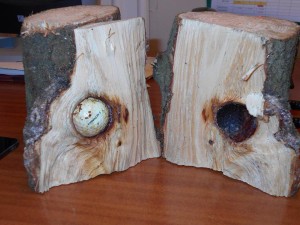
You need to be careful about where you decide to plant a tree. As it grows, it can even grow around obstacles over time. Thankfully, however, a tree cannot crack a house foundation unless a crack was already present.
Trees are often planted close to fences and other solid objects. This will be fine for many years until the tree trunk gets increasingly larger. Because a tree can’t move its roots other than by growing new ones, it has no choice but to grow around solid objects. And a tree cannot avoid adding more wood to its stem; it needs to do so to grow taller and older. The trees’ cell division and growth are always ongoing, similar to nearly every organism on Earth. Plant tissue can flow around, engulf and bind to foreign objects, with an end result that is quite strong. Trees on unstable slopes can even curve in order to continue growing straight and optimize access to sunlight.
It is essentially stress avoidance as the plant grows in directions that avoid deficits of moisture or light, temperature extremes, going around mechanical obstructions, and areas of low porosity. Trees will take the path of least resistance available to them. The tree roots are covered in small hairs that are able to detect whether or not a tree can continue growing in a direction. According to ScienceDaily, “A protein at the tip of root hairs called RHD2 produces free radicals that stimulate the uptake of calcium from the soil. Calcium then stimulates the activity of RHD2, producing more free radicals and further uptake of calcium. When an obstacle blocks the hair’s path, the cycle is broken and growth starts in another location and direction.” In this way, tree roots are able to detect obstacles and maneuver around them.

The wrong species in the wrong place can damage human-built structures by forcing them aside, rather than moving around them.
We occasionally come across some unusual items when performing a tree service for one of our customers. The power of nature over time is pretty incredible.

References:
Norwich BioScience Institutes. “How Roots Find A Route Around Obstacles In The Soil.” ScienceDaily. ScienceDaily, 3 March 2008. <www.sciencedaily.com/releases/2008/02/080228143543.htm>.
